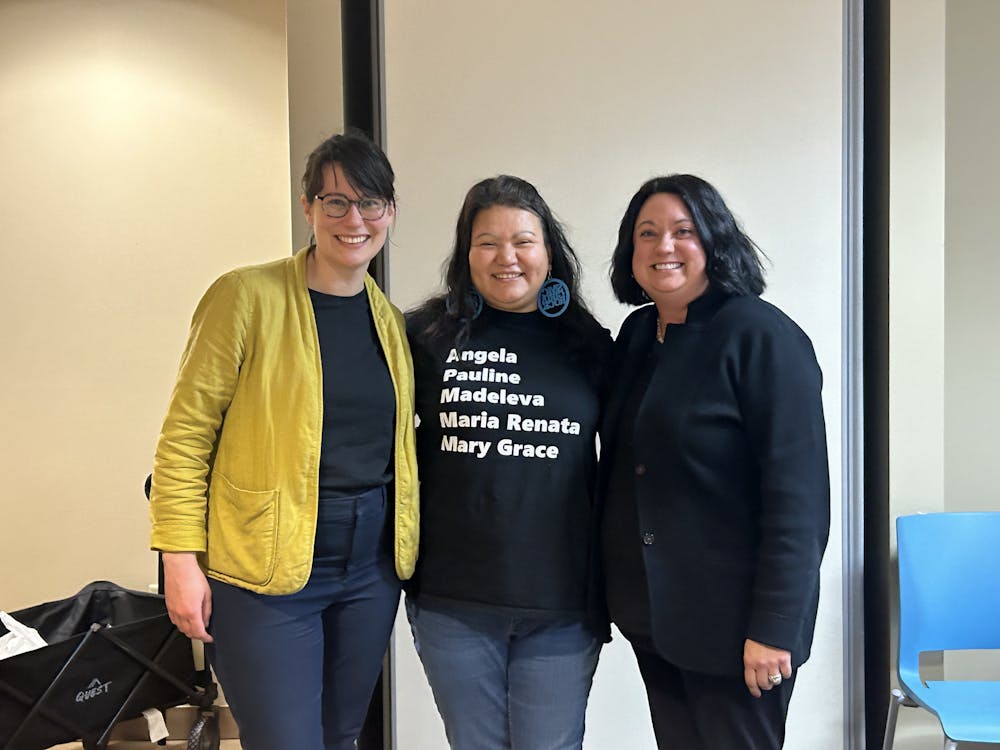The Center for Faith, Action and Ministry and the Office for Multicultural and International Student Services sponsored the showing of a documentary Friday afternoon to celebrate the end of Black History Month and the beginning of Women’s History Month.
Shown in the student government association (SGA) multipurpose room in the basement of the Student Center, the 2006 PBS documentary “Sisters of Selma: Bearing Witness for Change” followed the story of nine Catholic nuns from the Sisters of St. Joseph religious order in Rochester, New York, attending the Selma to Montgomery March in 1965.
The Sisters of St. Joseph established a mission settlement in Selma in 1940 to help Black Americans suffering from extreme poverty and segregation. But it wasn’t until over two decades later that the sisters took on a greater role in civil rights advocacy.
Pope John XXIII called for the Second Vatican Council in 1962 to propose an evolutionary vision of discipleship. The council continued until 1965. According to various sisters in the documentary, the speeches made by John XXIII inspired the sisters working in the Selma settlement to join the march from Selma, Alabama, to Montgomery, Alabama.
The Sisters of St. Joseph viewed their participation and engagement with the civil rights movement as acting as a “silent witness” to uphold the vision of discipleship and mission from Vatican II. The sisters’ presence brought greater awareness of civil rights and more solidarity with the Black community within the Catholic Church during that time period.
After the documentary, ecumenical chaplain Carrie Badertscher led a discussion with those in attendance.
Sister Kathleen Johnson, a Saint Mary’s alumna of 1974 and a Holy Cross sister, mentioned she was in attendance during Rev. Martin Luther King Jr.’s “I Have a Dream” speech in Washington, D.C. when she was a young girl. She cited herself as a silent witness.
“I remember being there with the crowds of people, and there was an energy there that was tangible. I mean, even for a kid, I could feel something very exciting was going on,” Johnson said.
During the discussion, Badertscher asked the group what it meant to have a silent witness in their life. Freshman Keeley Mitchelle spoke about her personal experience of having a silent witness in her life, but how it’s not enough for change to occur.
“When you do share it with someone, it’s still kind of like ‘Well, two people know now that this has happened, but like we are still at a loss.’ I still can’t feel like we can move forward and do something,” Mitchelle said. “Having someone know, sometimes, does feel a little bit better. But if nothing changes or happens, then it’s just like, ‘Well, I guess we both know now.’”
Mitchelle’s comment opened the floor to discussing the racial inequalities still felt in the current day. After another prompt from Badertscher, Mitchelle continued to voice her personal experience of racism.
“I was raised to not see color. We’re all human beings, and we’re all children of God. I’ve always been taught that way. But even on campus, just dealing with the n-word flying around and people like telling me, ‘We don't allow your kind at my party.’ It's just been so much,” Mitchelle said. “I think I’ve grown a lot as a person because there is a Black woman stigma so that I feel like I can’t react, but I don’t want to anymore.”
Badertscher asked what silent witnesses look like to the group and what type of solidarity is needed on Saint Mary’s campus.
“I feel like standing up or educating yourself within the context of anything [can help]. I’ve found that if you don’t have that [time to educate yourself] or if you don’t have that education period, you’re not really a silent witness. You’re just there,” junior Angelina Wright said.
Badertscher offered her advice to those in attendance in response to much of the need for an empathetic approach for change, emphasizing that while some change can come from administration on campus, most of it must come from students attending Saint Mary’s.
”We have got to start sitting at small tables with people who are different from us and receiving their experience, exactly as it is without trying to minimize or even qualify or quantify or try to explain it away,” Badertscher said. “If we want to be a community that truly seeks the peace of our friends or our sisters, we have to join together and figure out what that looks like.”










